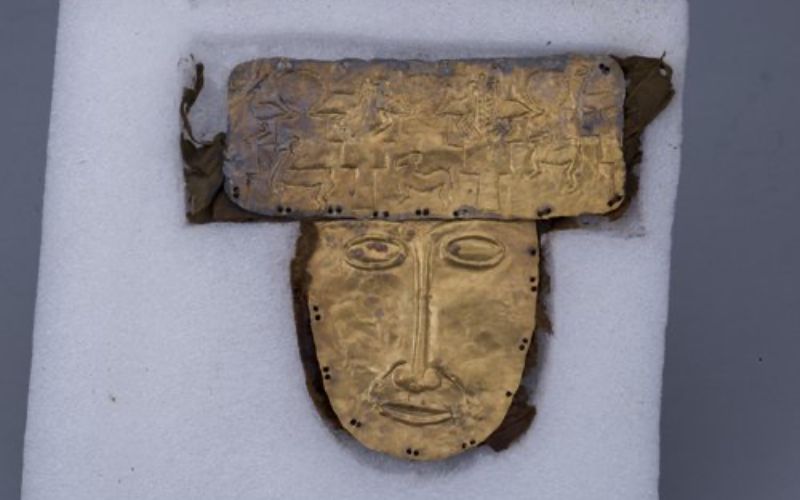
Chinese archaeologists have discovered the highest known archaeological site in China, called Dingqiong cave, in Qiongguo Township, Zhongba County, Shigatse City, according to a report by CGTN, a Chinese state-affiliated media outlet. The announcement was made at an Archaeological Achievements Conference in Lhasa, where 46 other archaeological finds were introduced.
Such Archaeological excavations and discoveries in Tibet may provide new insights into the region's ancient history and culture, but they cannot negate the Chinese government's ongoing efforts to destroy Tibetan monasteries, schools, statues, and monuments. Despite claims of preservation of the past, the Chinese authorities have been engaged in a "Cultural Revolution"-like crackdown on Tibetan culture, systematically destroying cultural and religious sites that are vital to the region's identity.
In December 2021, the Chinese authorities destroyed a 99-feet statue of Maitreya Buddha at Gaden Namgyal Ling Monastery at Kham Drago, along with 44 prayer wheels and thousands of prayer flags. In January 2022, the statue of Padmasambhava, three-storied high at the Chanang Monastery in Drago County of the Kardze Tibetan Autonomous Prefecture, was also destroyed.
To add insult to injury, eleven monks from Gaden Namgyal Ling Monastery were arrested by Chinese authorities on suspicion of sending news and photos of the statue's destruction to contacts outside the region.
According to Aadil Brar, the Chinese government's discovery of new archaeological sites from pre-historic periods has been used as a political tool to suggest that Tibet was always integrated with the Chinese mainland, thus denying Tibet's unique history. Such claims stand in stark contrast to the Chinese government's current efforts to destroy Tibetan cultural and religious sites. As such, any archaeological discoveries made in Tibet must be viewed with a healthy dose of skepticism, given the Chinese government's track record of distorting the truth for political gain.
In light of these developments, it is important to remember that Tibet's history and culture are not static entities to be manipulated for political gain. Rather, they are living, breathing expressions of a vibrant and diverse people, who deserve to be recognized and respected for their unique contributions to the world. It is only through genuine respect and understanding that the true value of Tibet's ancient history and culture can be appreciated and preserved for future generations.
Archaeology has been given significant importance in China, with the country rolling out and implementing plans for archaeological work in the 14th five-year plan period. The announcement was made by Li Qun, head of China’s National Cultural Heritage Administration, during a conference on January 17th. As per Li, 1,388 archaeological projects were conducted in 2021, and the latest five-year plan has set an ambitious goal of conducting archaeological research before major urban construction.
The Chinese Communist Party has a strong political interest in understanding and controlling the narrative of history. For them, keeping hold of the past's interpretation is an important project, as it has significant implications for the future. Even President Xi Jinping has emphasized the importance of promoting archaeology in the country.
In October 2021, Xi called for the development of “archaeology with Chinese characteristics,” a phrase that is now enshrined in official documents. Unlike Mao, who dismantled the past during the Cultural Revolution, Xi is not afraid of the past and takes pride in promoting China's history as the driving force for its future. According to experts, Xi's new Silk Road is being established through excavations, and China wants to demonstrate the extent of its history from Tibet to Central Asia.
Edited and collated by Team TRC